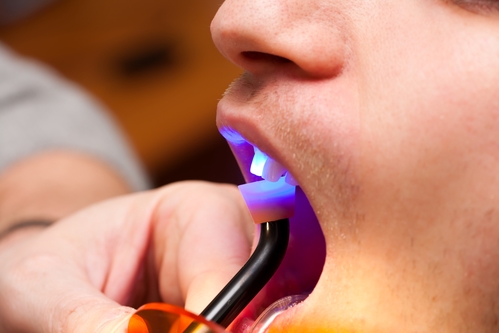Bonding
|
Tooth Bonding or dental bonding is the application of a tooth-colored composite resin or plastic to repair a chipped, fractured or discolored tooth. Bonding is used to make teeth appear longer, or as a cosmetic alternative to amalgam fillings. Bonding is a quick solution and can be completed in a single visit to your dentist.
Dental bonding can be used to:
- Fix the appearance of discoloured teeth
- Close gaps between teeth
- As a cosmetic alternative to amalgam fillings
- Make teeth appear longer
- Change the shape of teeth
- Repair decayed, chipped or cracked teeth
|
 |
Tooth Bonding or dental bonding is the application of a tooth-colored composite resin or plastic to repair a chipped, fractured or discolored tooth. Bonding is used to make teeth appear longer, or as a cosmetic alternative to amalgam fillings. Bonding is a quick solution and can be completed in a single visit to your dentist.
Dental bonding can be used to:
- Fix the appearance of discoloured teeth
- Close gaps between teeth
- As a cosmetic alternative to amalgam fillings
- Make teeth appear longer
- Change the shape of teeth
- Repair decayed, chipped or cracked teeth
What is the process involved for bonding a tooth?
Little advanced preparation is necessary and often the procedure does not require anaesthesia. A shade guide is used to find the right resin colour that matches your tooth.
Next, the surface of the tooth is etched to help the bonding material adhere to the tooth. The putty-like resin is then applied, moulded, and shaped. Next, an ultraviolet light or laser is used to harden the resin. Once hardened, your dentist will continue to trim and shape the bonded material, and polish the tooth. It takes about thirty to sixty minutes to complete the bonding on one tooth.
The advantages/disadvantages of dental bonding
Advantages:Dental bonding is easy, fast and one of the least expensive of cosmetic procedures. Crowns and veneers are customised tooth coverings manufactured in a lab, while bonding is done at your dental office. Also, bonding requires the least amount of tooth enamel be removed. Also, anaesthesia is usually not required.
Disadvantages:Bonding does not resist stains to the same degree as crowns or veneers, don't last as long and can chip and break off the tooth.
In general, bonding is best suited for small cosmetic changes, or temporary repair of cosmetic defects.